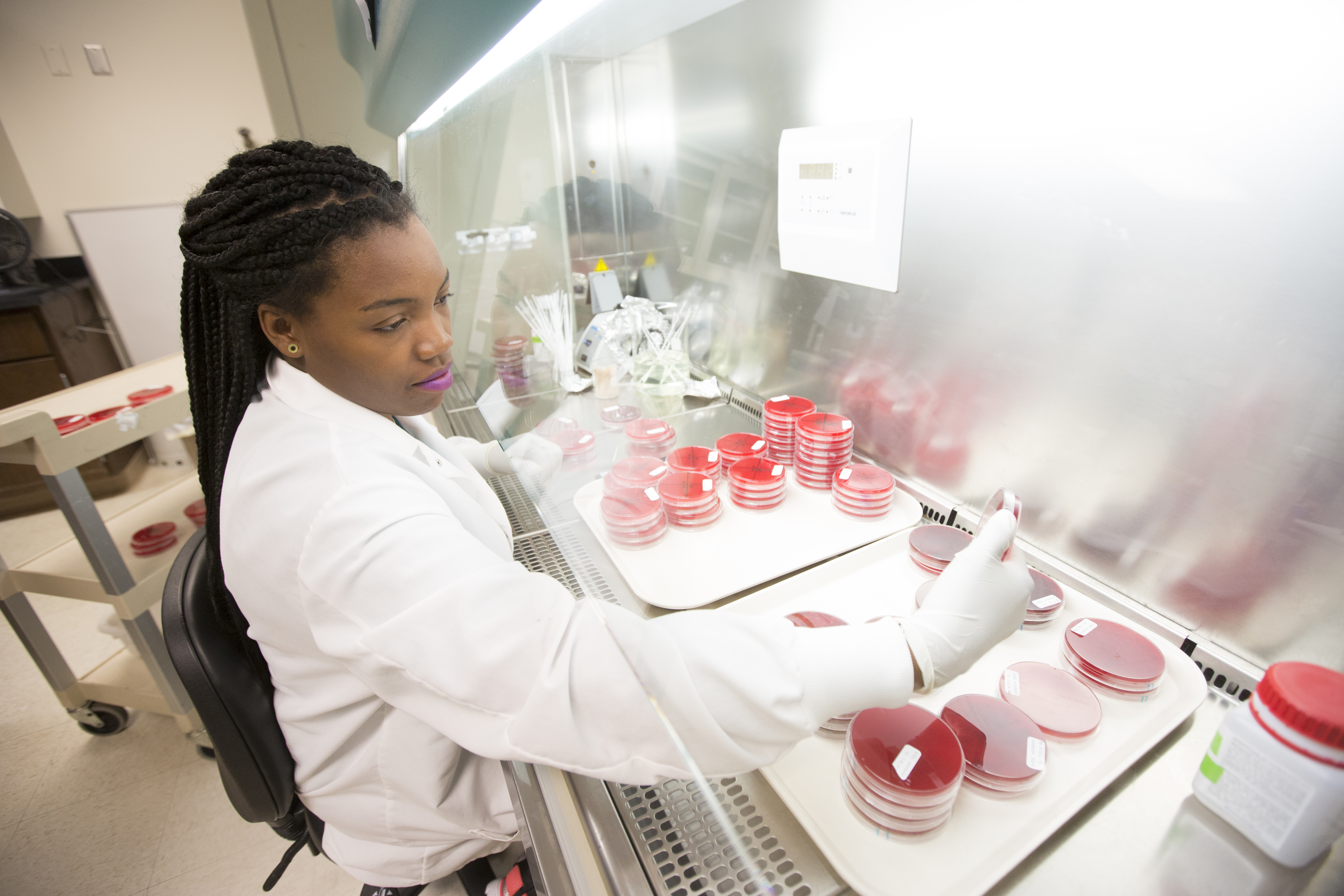
After making strides in the detection and control of a dangerous microbe that has bedeviled the beef industry, a broad-ranging E. coli research program will continue at the University of Nebraska-Lincoln at least through 2017.
Nebraska was tapped in 2011 by the USDA’s National Institute of Food and Agriculture to lead the $25 million project to investigate Shiga toxin-producing E. coli (STEC) strains that can contaminate beef. STEC strains can cause life-threatening bloody diarrhea and kidney failure.
The E. coli research has involved scientists and educators from 18 institutions who so far have published 77 refereed journal articles describing their findings, said project director Rodney Moxley, a professor of veterinary medicine and biomedical sciences at Nebraska.
Now entering its final phases, the project has led to improved detection methods; a better understanding of how STEC proliferates; improved eradication techniques for meat-packing plants; and food safety education for consumers and K-12 schools.
“The whole goal is to reduce the occurrence and public health risks from Shiga toxin-producing strains in beef,” Moxley said.
For example, a new study led by biological systems engineering professor Jeyam Subbiah detailed the energy and water demands for controlling pathogens in a meat-packing plant. Another new study by other researchers deployed secret shoppers to 265 restaurants in seven states and found restaurant servers are unreliable sources about the potential dangers of undercooked hamburgers.
Though E. coli is widespread in cattle and humans, harmful strains can be difficult to detect. The O157:H7 strain was first linked to food poisoning after an outbreak involving McDonald’s restaurants in 1982. In 1993, more than 730 people became ill and four died after eating hamburger patties tainted with the Shiga toxin-producing bacteria. In fall 2015, Chipotle temporarily closed more than 40 stores after an outbreak of another Shiga toxin-producing E. coli strain. Today the USDA regulates the O157 strain and six other strains as adulterants in beef. Those seven strains, plus an eighth that caused an outbreak in Germany and other parts of Europe, have been investigated in the project.
Isabel Walls, national program leader for food safety with the National Institute of Food and Agriculture, noted that the project demonstrates the benefits of a coordinated approach.
“The researcher’s findings will save lives and stop people from getting sick,” Walls said. “And there is a substantial economic benefit, not only in reducing the cost of food borne illness and associated productivity losses, but the cost of food recalls, lost brand reputation and business failures.”
Researchers from Kansas State University, Nebraska, the Los Alamos National Laboratory in New Mexico and the Dana Farber Cancer Institute in Boston are using genetic and immunological science to quickly detect the presence of toxic strains of E. coli in cattle and beef. Many of these new methods and reagents could be applied to human patients as well. The goal is to identify illness-causing contaminants before they lead to food recalls or make people sick.
“These tests we’re developing are a big step forward, but there’s still a lot of progress to be made,” Moxley said.
More developments are expected in the coming year, with hopes that the tests will be commercialized by private industry. The goal is to publish all of the project’s discoveries in refereed journals for public use.
Other project teams conducted epidemiological studies to learn more about where the pathogen proliferates. One significant finding, from Kansas State scientists, was that a virulent strain of E. coli that killed more than 50 people in Germany in 2011 is not found in cattle. Contaminated fenugreek sprouts are believed to be the source of the European outbreak.
Recognizing an animal’s hide becomes a major source of contamination when the hide is removed during harvest, scientists collaborated to determine the bacterial microbiome on feedlot cattle hides. Somewhat surprisingly, they found that cattle hides with a more diverse bacterial microbiome were less likely to carry STEC strains, indicating other bacteria may effectively compete with and crowd out the more worrisome strains.
Scientists also are working on packing-house interventions, such as organic acid sprays, high-pressure processing to kill bacteria and electrostatic sprays that enable antimicrobials to more efficiently cling to meat surfaces.
Experts at Nebraska and Kansas State have developed educational materials for teachers and beef industry workers. The project has provided support for high school students to learn about food safety careers and it’s supported 80 internships for college students, including several at minority-serving institutions such as Maryland Eastern Shore, Alabama A&M and Tuskegee University.
For more information, click here.








